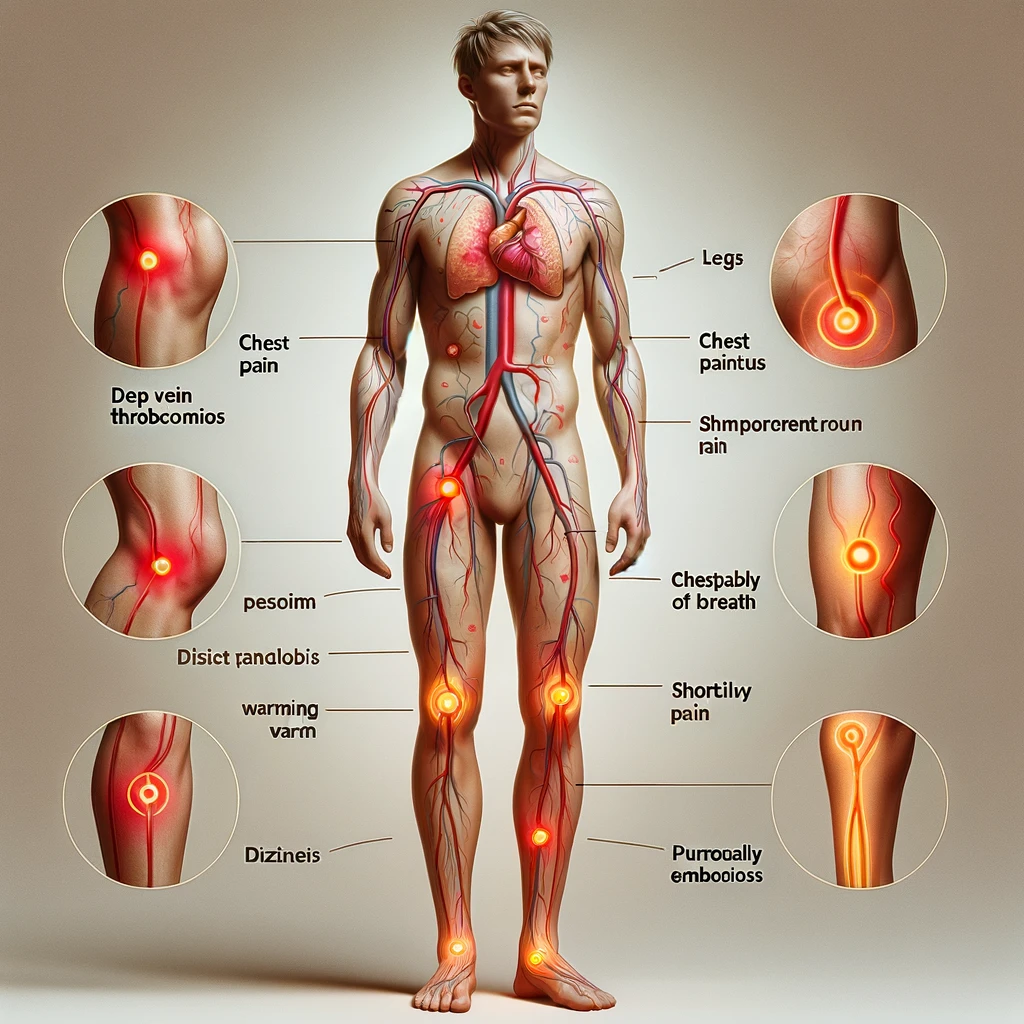Blood clots can be a serious medical condition that requires immediate attention. These clots can form in various parts of the body and lead to significant health issues, including strokes, heart attacks, and pulmonary embolisms, depending on their location and severity. Recognizing the early signs of blood clots can be crucial for seeking timely medical intervention and preventing potential complications. This article outlines key symptoms associated with blood clots, emphasizing the importance of awareness and early detection.

Understanding Blood Clots
Before delving into the early signs, it’s essential to understand what blood clots are. Blood clots are semi-solid masses of blood that can form in veins or arteries. While clotting is a natural process that prevents excessive bleeding when you’re injured, clots can become dangerous when they form unnecessarily and block blood flow.
1. Swelling in One Limb
One of the most noticeable signs of a blood clot is unexplained swelling in one limb, often a leg. This condition, known as deep vein thrombosis (DVT), can occur without any other noticeable symptoms. The swelling is caused by blood accumulating behind the clot, which can lead to a noticeable difference in the size of one limb compared to the other.
2. Pain or Tenderness in the Leg
Pain or tenderness in the leg, often described as cramping or soreness, can be a sign of DVT. This pain might only be noticeable when standing or walking, though it can become persistent as the clot worsens. The discomfort typically starts in the calf and can feel like a cramp or charley horse.
3. Red or Discolored Skin on the Leg
Another early sign of a blood clot is a noticeable change in the color of the skin where the clot is forming. The skin may appear reddish or have a bluish tint, signaling that the blood flow has been affected. This discoloration can sometimes be accompanied by warmth in the affected area.
4. Shortness of Breath
If a blood clot breaks free and travels to the lungs, it can cause a pulmonary embolism (PE), a potentially life-threatening condition. An early sign of PE is sudden shortness of breath. This symptom can occur without any physical exertion and may be accompanied by rapid breathing and an increased heart rate.
5. Chest Pain
Chest pain that may feel sharp or like a heavy pressure can be a symptom of PE. This pain can become worse with deep breaths and might be confused with a heart attack. Unlike heart attack pain, however, PE-related chest pain is often sharp and stabbing and may be localized to a specific area.
6. Unexplained Cough
An unexplained cough that may produce bloody or blood-streaked sputum can be another sign of PE. This symptom can occur alongside shortness of breath and chest pain, making it important to seek medical attention immediately if these symptoms are present together.
7. Leg Warmth and Weakness
Areas of warmth or weakness in the leg, where the blood clot is located, can be early signs of DVT. The warmth comes from the blood accumulating, and the area may feel unusually warm to the touch compared to other parts of the body.
8. Dizziness or Lightheadedness
Dizziness or lightheadedness can be a sign of a more severe clot, especially if it’s traveled to the lungs (PE). If you experience sudden dizziness along with other symptoms like shortness of breath and chest pain, it’s crucial to seek medical attention immediately.
Prevention and Early Intervention
While knowing the early signs of blood clots is important, prevention is equally crucial. Simple lifestyle changes such as staying active, maintaining a healthy weight, and staying hydrated can significantly reduce the risk of blood clots. Additionally, it’s important to follow medical advice regarding medication or treatments if you’re at higher risk for clotting.
If you suspect you or someone else may have a blood clot, it’s critical to seek medical attention immediately. Early detection and treatment can prevent the clot from becoming more dangerous or even life-threatening.
Conclusion
Blood clots pose a significant risk to health but recognizing the early signs can lead to timely treatment and a positive outcome. Swelling, pain, discoloration in the leg, shortness of breath, chest pain, an unexplained cough, warmth, weakness, dizziness, and lightheadedness are all symptoms that should prompt immediate medical evaluation. Awareness and proactive health measures are key to preventing and effectively managing blood clots. Remember, when in doubt, always consult with a healthcare provider to ensure the best care for your specific situation.




